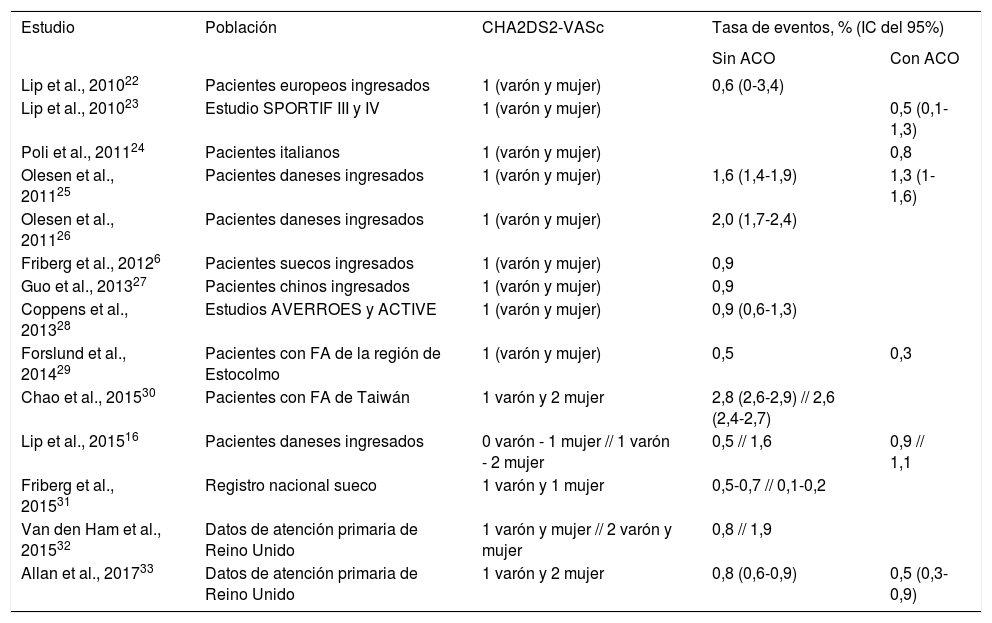Los pacientes con fibrilación auricular no valvular y puntuación CHA2D2-VASc 1 (un único factor clínico de riesgo) suponen un grupo significativo de pacientes en la práctica clínica, que plantean cierta dificultad en cuanto a la toma de decisiones sobre si iniciar y mantener de forma crónica un tratamiento anticoagulante oral. La dificultad deriva en que, clásicamente, se ha tenido la idea de que son pacientes de bajo riesgo tromboembólico, cuando parece tratarse de un grupo heterogéneo con un riesgo tromboembólico no des-preciable. Por ello, es fundamental individualizar la decisión y tener presente que, pese a discrepancias entre distintas sociedades científicas, las guías de práctica clínica de la European Society of Cardiology re-comiendan tratar con anticoagulante oral. Además, hay ciertos factores de la escala CHA2D2-VASc que con-llevan un mayor riesgo tromboembólico y algunos pacientes pueden presentar otros factores de riesgo no incluidos en dicha escala, que contribuyen también a incrementar el riesgo tromboembólico.
A la hora de iniciar un anticoagulante oral, su elección debe individualizarse atendiendo a las características propias de cada paciente, valorando el balance riesgo-beneficio de iniciar dicho tratamiento, resaltando que los anticoagulantes orales de acción directa presentan un perfil de riesgo más favorable que los antagonistas de la vitamina K, lo cual es especialmente interesante en estos pacientes de menor riesgo. En caso de pautar un anticoagulante oral de acción directa, se ha de tener presente cuándo deben realizarse ajustes de dosis en función del perfil renal, la edad o el peso, pues un inadecuado ajuste de la pauta se asocia con un aumento de los eventos isquémicos y hemorrágicos.
Patients with non-valvular atrial fibrillation and a CHA2DS2-VASc score of 1, with only one clinical risk factor, are a significant group in daily clinical practice, who represent a challenge in therapeutic decision making, especially with regard to whether to start or maintain chronic oral anticoagulant therapy. The main difficulty stems from the fact that these patients were previously believed to have a low thromboembolic risk, whereas currently they seem to be a heterogeneous group with a significant thromboembolic risk. Therefore, it is very important to individualise treatment decisions in each patient and base the selected treatment option on the European Society of Cardiology clinical practice guidelines, which recommend oral anticoagulant therapy, despite discrepancies with other scientific societies. In addition, some risk factors in the CHA2DS2-VASc score involve greater thromboembolic risk than others and some patients have other risk factors not included in CHA2DS2-VASc score, which increase their risk. When starting an oral anticoagulant treatment, the choice of agent should be individualised, bearing in mind the characteristics of each patient, and assessing the benefit-risk profile of the treatment, given that direct-acting oral anticoagulants have a more favourable profile than vitamin K antagonists, which is particularly important in lower risk patients. Finally, an important key point with direct-acting oral anticoagulants is dose adjustment according to renal function, age or weight, because an inadequate dose substantially increases the bleeding and ischaemic event rate.
Artículo
Comprando el artículo el PDF del mismo podrá ser descargado
Precio 19,34 €
Comprar ahora










